An outing to track the mountain gorillas of Rwanda starts with a trek along dirt paths, lined with greenery and looking on to the lush grandeur of the Virunga Mountains, and Volcanoes National Park. The eponymous volcanoes (there are six extinct and three active volcanoes in the park) are covered entirely in greenery, and they form the border between Rwanda, the Democratic Republic of Congo and Uganda. It’s when you get into the montane, often misty forests, past the fertile foothills, that you have the best chance of spotting a mountain gorilla - perhaps stripping some bamboo for breakfast, passing through a grassland or swinging through the dense forest, just for fun.
“To see the mountain gorillas is a wildlife experience unlike anything else on the whole planet,” says Steve Venton, a destination expert with over two decades experience of working in Rwanda. “You’re not in a car, you’re not even using binoculars - you’re walking amongst a family of primates. You’ve got little baby gorillas doing forward rolls and adolescents swinging from trees, picking branches that they know are going to break just to be annoying to their parents.
There's more connection between a human and a gorilla than any other species...
“David Attenborough said that there's more connection between a human and a gorilla than any other species, and it's true. You can identify with the behaviour you're seeing. You look into their faces and it's surreal, because you can see expressions: surprise; boredom; excitement; interest; annoyance."
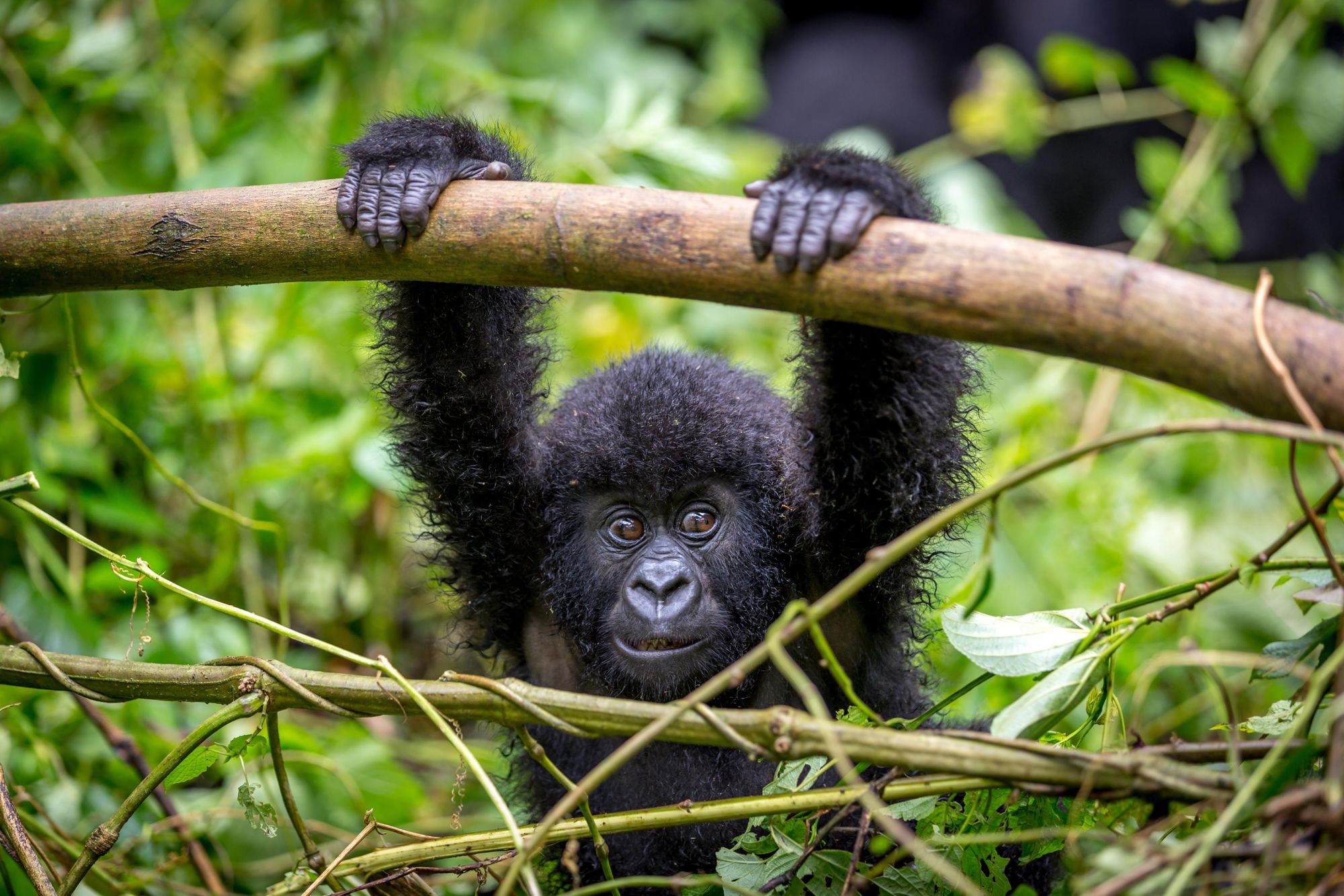
The experience is extremely expensive. It costs $1,500 US per person, with only 100 permits available each day, but this tourist framework has been key to the success of the conservation work here.
It was in 1979 that David Attenborough visited the mountain gorillas. At that time, there were only 250 in the area. “They were on the brink of extinction,” says Steve. Today, thanks to hugely successful, long-term conservation work - which very much includes tourism, and puts communities in the vicinity of the gorillas at the heart of the project - there are now over 1000 mountain gorillas here.
“It is expensive, but it’s worth it,” says Steve. “To be there with them, and to know that you are contributing to the success of the conservation of an entire species; it matters. It can take anything from 30 minutes to four hours to hike into the forest and find them - but then, however long the hike takes you, you’ll get to spend an hour with them, with your group and a ranger.”
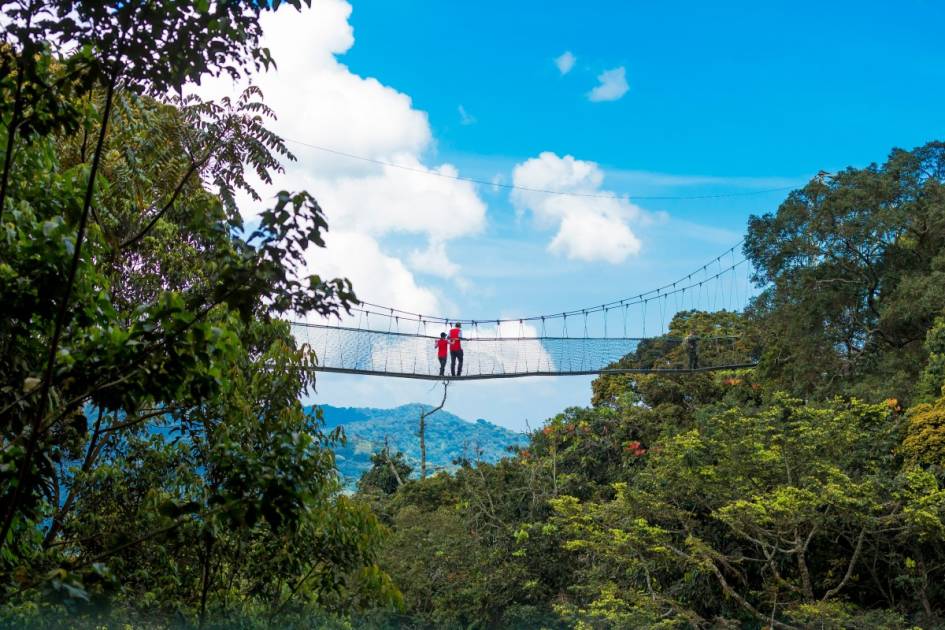
Before even Attenborough had visited, the famed primatologist Dian Fossey, who studied the mountain gorillas here from 1966 until her death in 1985, was already hard at work in the Virunga Mountains. Her story would be turned into a film, Gorillas in the Mist, which was nominated for five Academy Awards in 1988. All of the above set Rwanda on a path to become a booming eco-tourism hot spot.
The civil war which rocked the country and culminated in the 1994 genocide, destabilised that - but 30 years on the country is flourishing. It's now a model of how conservation can work hand-in-hand with local communities for the benefit of both parties. While the prime attraction might be the gorilla trekking, there's a whole lot else to explore too - from paddling and wild camping on Lake Kivu, one of Africa’s Great Lakes, to canopy walkways at ancient rainforests beyond.
This is a place where tourism is making a difference.
“When you're on your tour in Rwanda, except for the hotels, you probably won't meet any other foreign people at all anywhere you go,” says Steve. “But this is a place where tourism is making a difference. Rwanda is not known for adventure, but we’ve got incredible mountain biking and cycling; we’ve got awesome hiking through villages, communities, forests and nature, and we’ve got kayaking and canoeing - and we’ve hardly scratched the surface of what we can do.”
We caught up with Steve Venton and Renson Muchuku Mburu, who contributed to the creation of our new Ultimate Trip to Rwanda, to talk about some of the beautiful spots the trip touches on - you can combine it with gorilla watching (which is an optional add-on) or simply head out to discover Rwanda.
Visit the Umusambi Village Trail
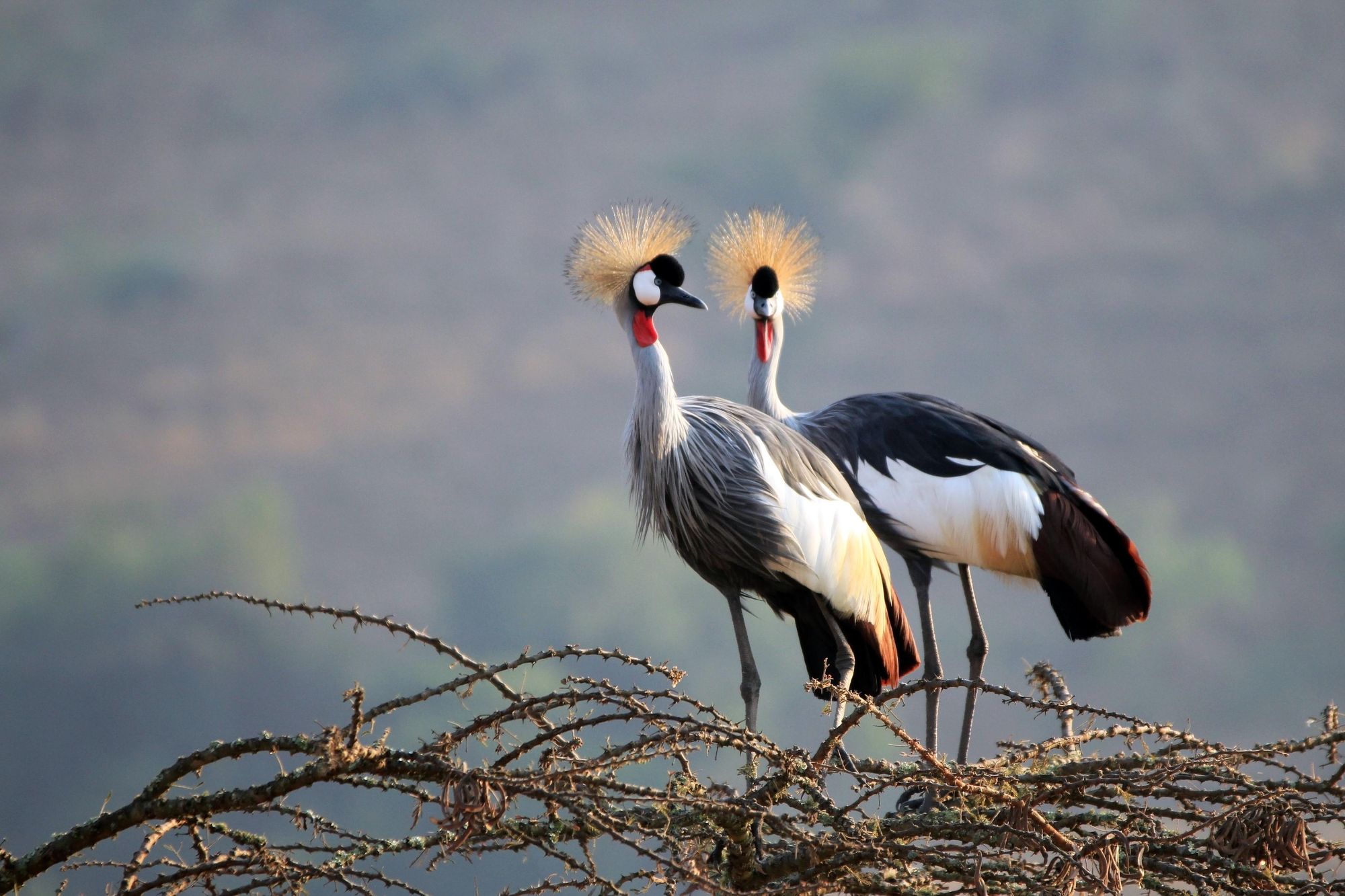
Umusambi Village is a restored wetland which sits 12.5 miles (20km) west of the Rwandan capital of Kigali. The area is a sanctuary for over 50 endangered grey crowned cranes which were saved from the illegal pet trade.
“They rehabilitate these beautiful birds which were once hunted for their eggs and their beauty,” explains Renson. “People used to capture them and put them in their homes and pluck their wings. Here they can be in a community of other crowned cranes, grow, reproduce and move away from poaching; and people view them as wildlife.”
Owing to its proximity to the capital of Rwanda (and indeed, to Kigali airport), Umusambi is often cited as a great place to start or end a trip in Rwanda. “The trail itself takes about 90 minutes to two hours and it's quite informative,” Renson says. "It's a guided trail, and most people who walk it; they see it's something that can be done by any person of any age regardless of fitness level.”
Steve adds: “We cycle through villages nearby and see the communities, and meet local people - and have lunch at the community centre that's based there. And then we have 45 minutes or so to walk around the sanctuary itself."
Kayak and Camp on Lake Kivu
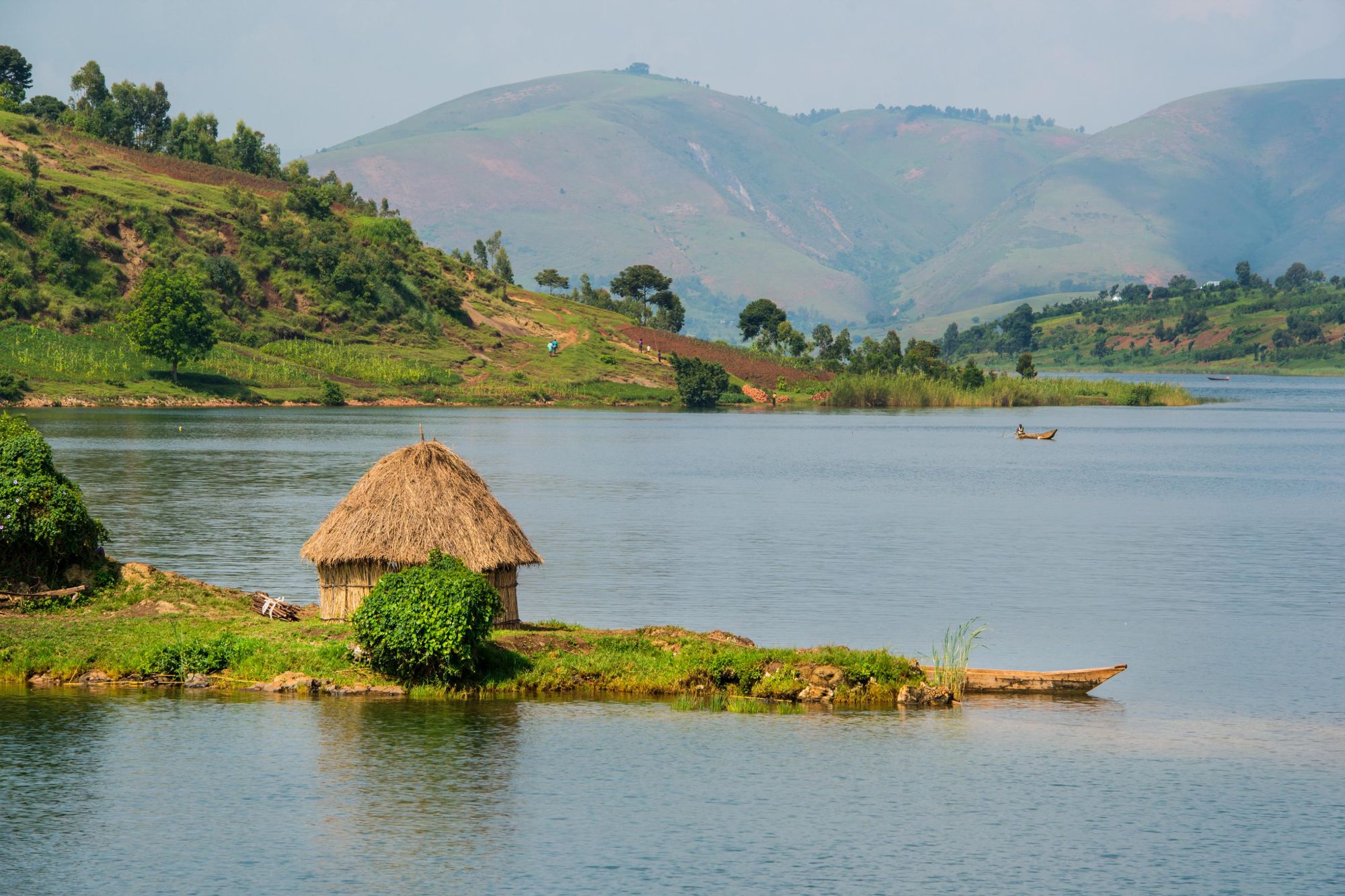
“Lake Kivu is unique in the world for about eight to 10 different reasons,” Steve says. “It's the largest lake in Africa that doesn't have any hippos or crocodiles, and that makes it the safest place in the entire continent for getting out on the water. It’s the best place for a multi-day tour kayaking in all of Africa. There are one or two other locations where you can do multi-day paddling, but we reckon we've got the prettiest and certainly the only one without a crocodile.
We cook a communal meal and we get a little fire going and we sit around in a proper African way and enjoy the community.
“The water is beautifully clear. It's 23 degrees year round and it's flat and calm for at least five or six hours every single day. We understand the wind pattern very well. It's a year-round destination. If it rains, it's only for a couple of hours and we just hang on for a bit, but most of the time, it's hot and sunny; this lush, green landscape stretching off as far as the eye can see.”
There are 250 islands on Lake Kivu, so plenty of quiet places to camp.
“We get to this small island called Gishayu Island, where we set up tents and everybody stays overnight," Steve continues. "We cook a communal meal and we get a little fire going and we sit around in a proper African way and enjoy the community. It's a little forested island. We camp on the summit and it's got a nature trail and lots of birds - you can walk around it by yourself.”
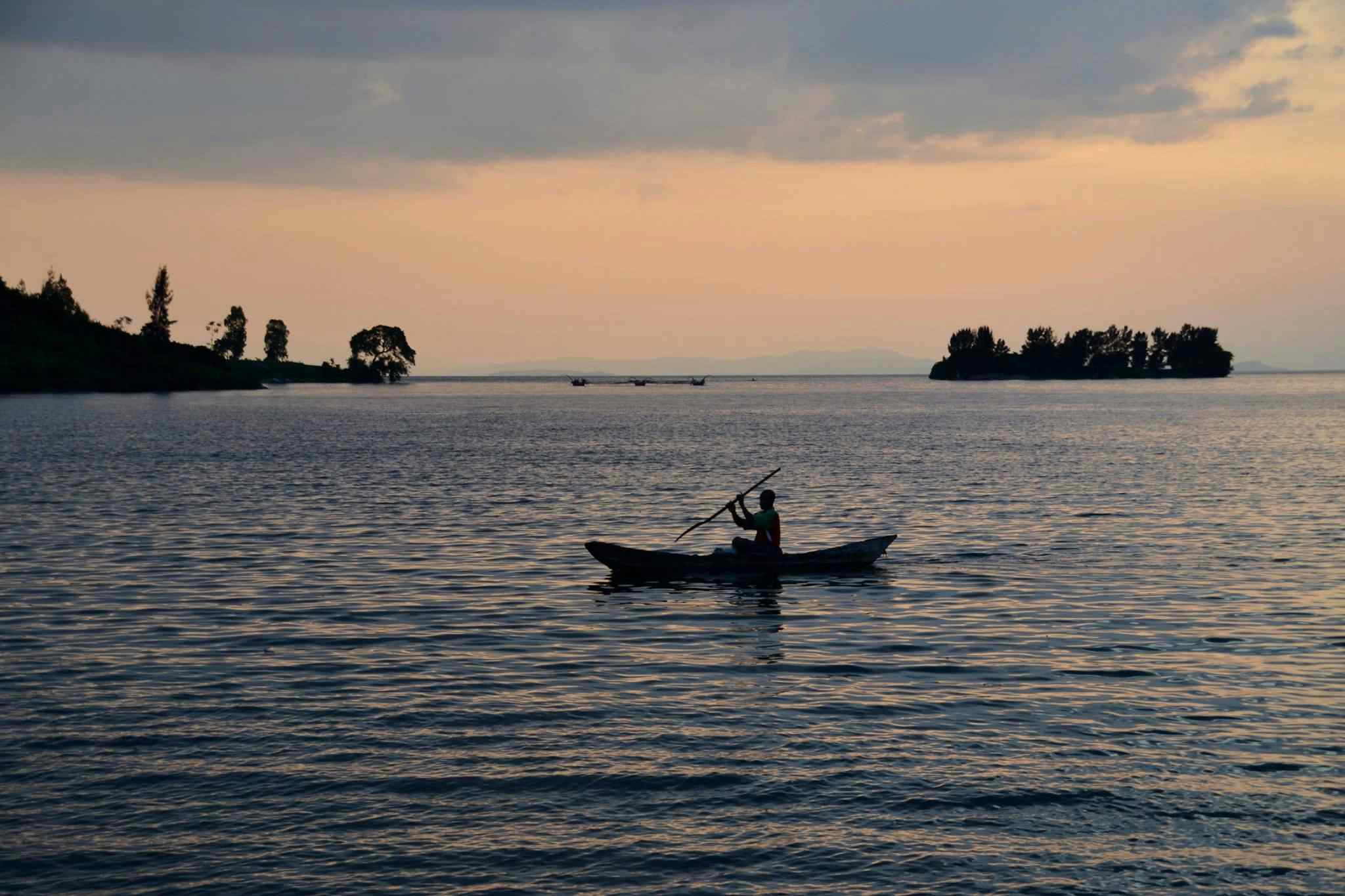
“It's amazing; amazing,” adds Renson. “You also stop at Napoleon Island, which is quite significant. It is not the largest but it has the highest summit of the islands in Lake Kivu. Beautiful views. It's home to an estimated 40,000 fruit bats on that particular point.” Napoloeon Island is officially known as Munini, but is often called Napoleon Island as the shape of the island resembles Napoleon's hat.
On Lake Kivu you'll also find fisherman who sing on the water.
We have the singing fisher folk of Lake Kivu, who are a spectacle in their own right.
“What we sometimes do is go out in the evening with the fishing folk," says Steve. "These are local people that shine their lights down into the lake to attract small little sambaza, which are like little sardines. And then they drop their nets and catch the fish underneath their boats. To do that they have these three-hulled boats that they latch together with big poles. They're totally impractical for sailing, so they paddle out into the water, and they stay there overnight.
“To encourage each other and to keep them all paddling in rhythm, they sing as they go. So we have the singing fisher folk of Lake Kivu, who are a spectacle in their own right. It's one of the most beautiful things in East Africa; a traditional way of going about daily life. You sit on the shore of the island, or we're on the kayaks and we'll just get to be there as they go past. It's a really, really special thing.”
The Canopy Walk at Nyungwe Forest National Park
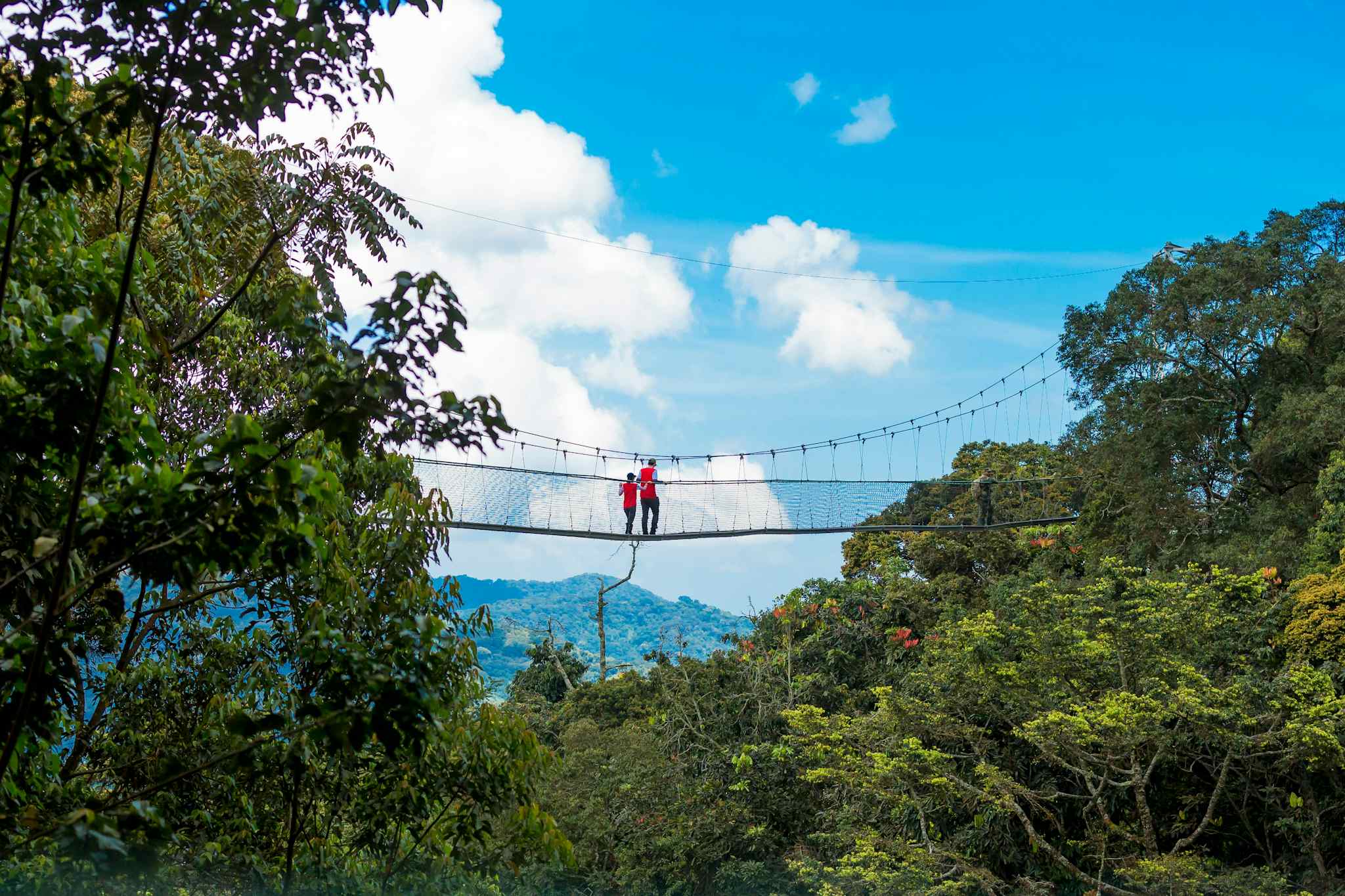
Nyungwe Forest National Park is one of the oldest rainforests in all of Africa. Picture the perfect rainforest and you’re probably picturing the right thing - with dense vegetation, waterfalls and greenery lapping and layering into the distance.
The canopy walk, 70m high and 160m long, takes you up to a bird's eye view.
“It is one of the oldest continuously forested ecosystems on the planet,” says Steve. “It's been a forest for millions and millions of years, much longer than even the Amazon. So it's got an incredible biodiversity.” The park is home to 310 bird species and 13 species of primate, including the L’Hoest’s monkey, which is endemic to the Albertine Rift, and to a small population of chimpanzees. “I went to see the birds and we were walking down a forest trail one day and this troop of Colobus monkeys jumped over us,” Steve recalls. "There were 40 or 50 of them.”

“With Nyungwe, it's all about the wildlife. It's not really a challenging place, but the interest is in where you are and what you're seeing. There are some other options. There's a three-day trail going north called the Congo Nile Divide - and there's one summit which you can do in Nyungwe as well, called Bigugu. That is a day hike from the trailhead to the summits and back.
“The canopy walkway is a three-hour trail from the Visitor Center. You'll see lots of wildlife and the rangers will talk to you all about the species. The canopy walk is Africa's highest canopy walk - and it's the only one in a national park like this.”
Explore the Land of a Thousand Hills on Bike
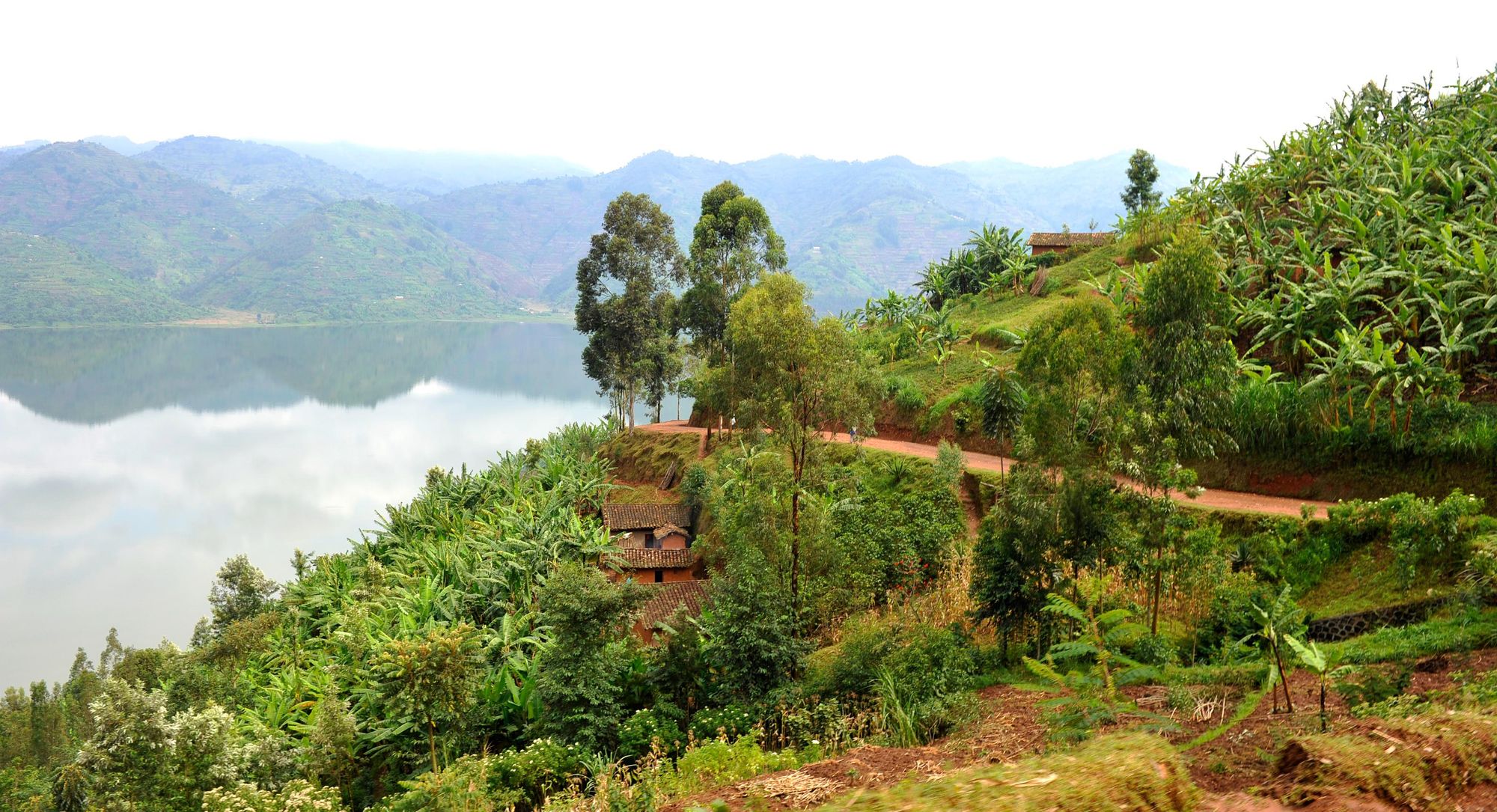
The rolling geography of Rwanda means it is often referred to as the land of a thousand hills. This, as those with bicycle grease stains on all of their clothes will already know, means that the country makes for remarkable cycling.
The best riders in the world are set to find this out for themselves in 2025, when the UCI Road World Championships will be held in Kigali - the first time the biggest event in road cycling has ever been held in Africa. The route will include an ascent of Mount Kigali (average gradient of 6.6% and max of 19%), and even includes a cobbled climb which may very well end up deciding the event race.
“Road cycling is huge,” Renson says, “But off-road cycling has still only been touched a bit, and there’s huge potential for mountain biking. Cycling is a huge, huge thing in Rwanda.”
Steve continues: “What we're trying to do is not to ride the wave of that event; but to use the opportunity of the extra coverage and visibility to create long-term value for the whole country, so that people won’t just travel that one time, but come back for months and years ahead.”
Inspired? Check out our Ultimate Adventure in Rwanda now!


